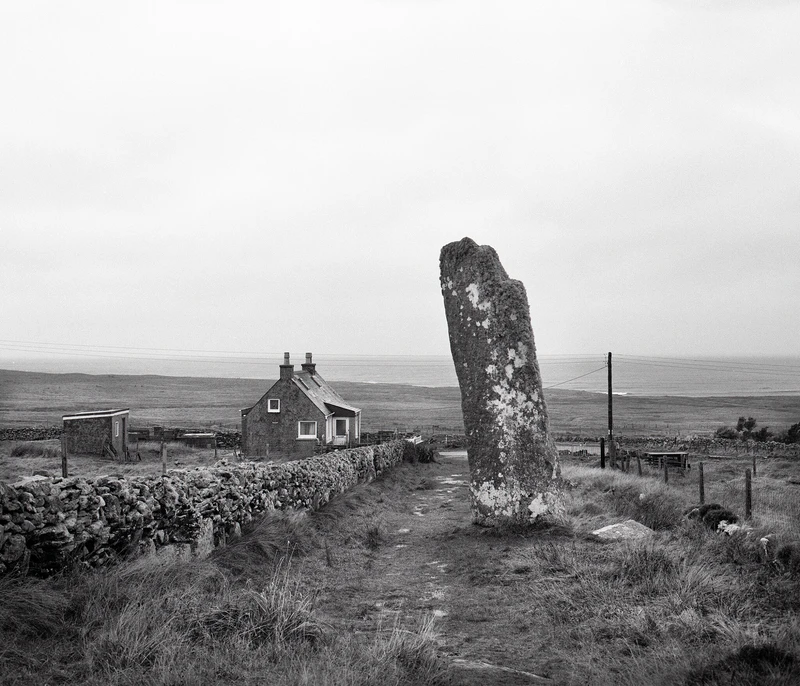William Arnold: Sunspots
9 Sep-28 Oct 2023


Over-romanticised and often marketed beyond meaning, the island of Lewis & Harris and the almost-island of Cornwall share much in common. Administratively, at time of writing they both belong to the United Kingdom, yet in culture, landscape and even to varying extents language they are territories apart — owned perhaps but not fully assimilated.
Taking as its starting point the distinctive megalithic remains of the Neolithic and Bronze Age, Sunspots is a carefully edited long-term photographic study of these fragile rural landscapes where the meaning and belonging of everything feels contested.
Val Williams, Professor of the History and Culture of Photography, London College of Communication, describes William’s approach to landscape photography:
In fundamental ways, Arnold both insists on the antiquity of the places he photographs yet at the same time insisting that the signs and symbols of ancientness become contemporary, and as one with the objects that exist beside the standing stones and ancient configurations of land. It is very much, he seems to insist, a question of meaning- the sentience which we give the inanimate signs of history around us, whether an abandoned tractor, a battered car, or a relic of antiquity.
The landscape, William Arnold acknowledges, is infused with histories, both ancient and modern, that no-one fully understands. Photography acts as an identifier, sometimes an interlocutor, creates an expose of riddles, facts that we stumble upon in the distracting mists of time.
A publication of Sunspots is also available at Kestle Barton.